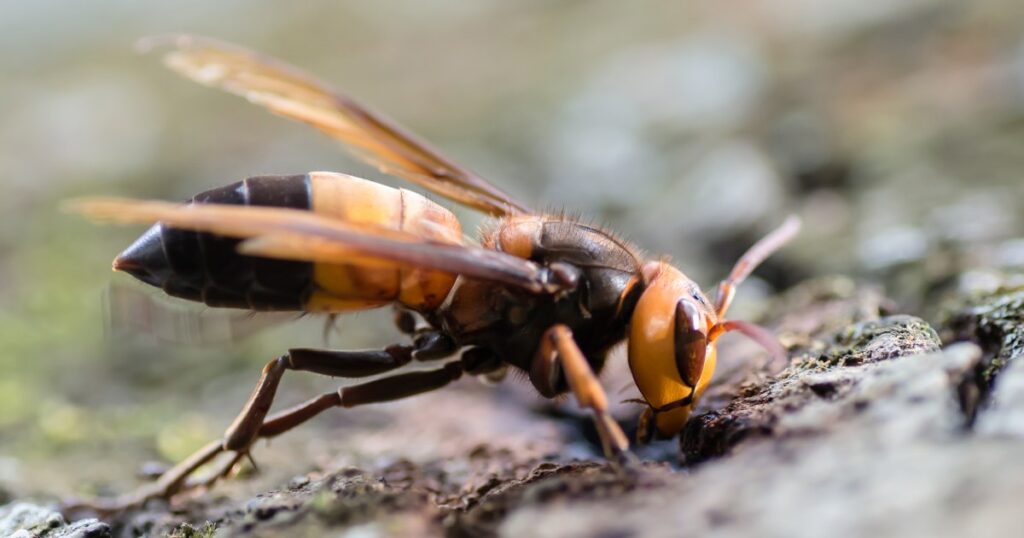
The Summary
- Southern giant hornets, sometimes referred to as “murder hornets,” have been found in Europe for the first time.
- A study last month confirmed that two pairs of the hornets have been found in northern Spain since 2022.
- Scientists are hunting for the hornets’ nest.
Researchers in Spain are scrambling to find the nest belonging to the first southern giant hornets found in Europe.
Sometimes referred to as “murder hornets” because they are known to kill off beehives, the insects grow to an average length of 2 inches. They are native to parts of Asia including India, China, Thailand and Vietnam.
In a study published last month in the journal Ecology and Evolution, five Spanish scientists described two separate sightings of southern giant hornets, whose scientific name is Vespa soror. Both were in the northern city of Siero in Asturias province: A pair was spotted in March 2022, then another two in October 2023.
Researchers believe the hornets have a nest that dates back at least a year.
Northern giant hornets — a closely related species originating in other parts of Asia — were first spotted in the United States in Washington state in late 2019. The northern and southern hornets are similar in behavior and appearance, though the former have shorter nesting periods and produce smaller colonies and nests.
The first northern giant hornet nest found in the U.S. was promptly destroyed in October 2020, but a live hornet was spotted in Washington the following year.
Southern giant hornets are known to send out scouting teams to find prey colonies, and the scouts rub their bodies against hives or nearby vegetation to signal others to join them, according to research published in 2021. They then enter a “slaughter phase” in which they can take out entire beehives in a matter of hours.
Neither northern nor southern giant hornets have been found in Europe beyond the four documented in Spain. The scientists behind the recent study think the hornets likely first arrived on a cargo ship.
Omar Sanchez, the study’s lead author and a zoology professor at the University of Oviedo in Spain, said he expects the hornets to impact the balance of the local ecosystem because they aggressively hunt native hornets, bees, butterflies, moths and flies. A long-term decline in the bee population can affect the availability of honey and disrupt pollination processes on which many plants and crops rely.
“Here in northern Spain, we have another species of Asian hornets that is called Vespa Veluntina, and it’s causing serious damages to the beekeeping sector, so the presence of another Asian hornet can magnify the bad affects,” he said.
Sanchez added that researchers are trying to find the nest, so they can destroy it.
“It’s a little bit tricky because this species makes their nest under the ground — more than 30 meters — so it is not easy to find,” he said. “We are trying.”
The researchers have also been canvassing for more hornet sightings, Sanchez said.
Sanchez and his study co-authors found and captured the four hornets after beekeepers in the area told them about seeing unusual-looking wasps. After trapping the hornets, the scientists extracted DNA samples and conducted genetic testing and analysis to confirm the species.
Molly Keck, an entomologist at Texas A&M University, said the genetic study confirming the species is the first step toward mitigation efforts, such as educating the public and beekeepers and alerting local authorities “so that management plans, education, mapping, distribution can be done.”
“Most of these invasive species are going to come in through a port city somewhere,” she added, “so whatever quarantines and check measures are done, there are really going to be the way that they’re spotted.”
Such processes across the globe may need to get beefed up as a precaution if countries want to ensure cargo is free of bugs, Keck said.
Sanchez said that the detection of southern giant hornets in Spain indicates that more are likely on the way.
“Probably in the near future, this species will be detected again in other localities of Spain and probably Europe,” he said.













